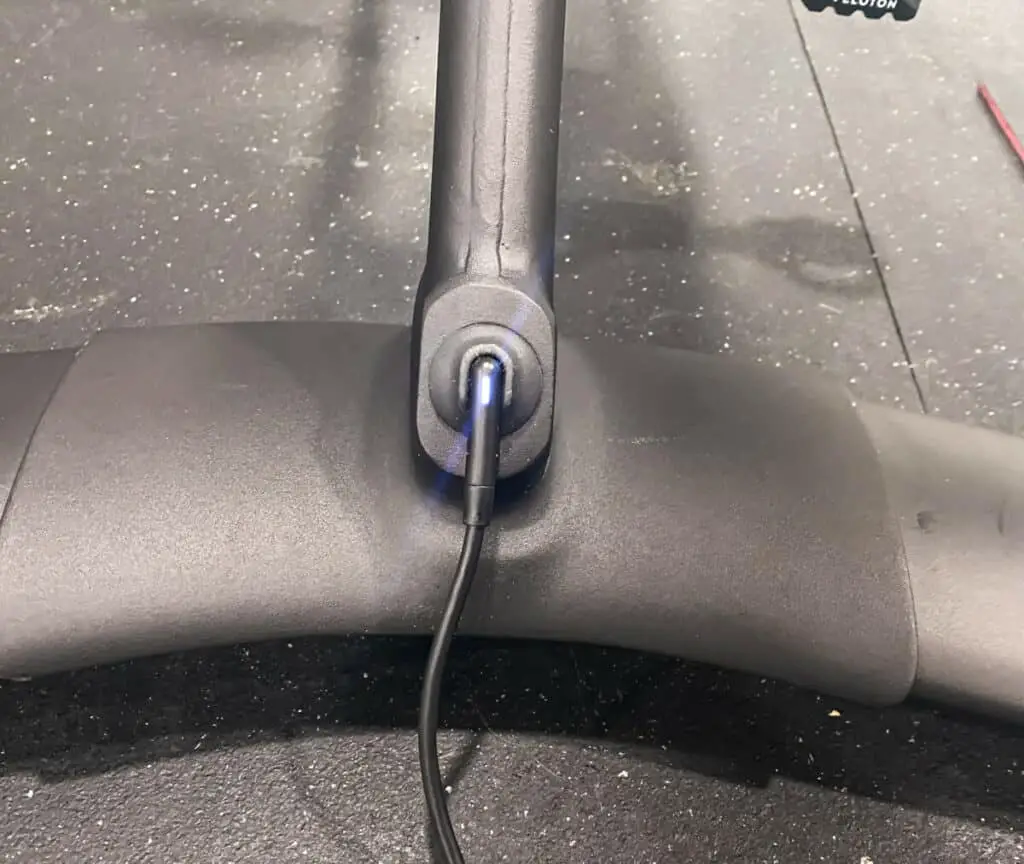All Peloton units (including Peloton Bike and Bike+, Peloton Tread and Tread+) use two input sources. The power outlet provides each unit with the electricity required to operate the touchscreen, and maintain internet connectivity, enabling users to attend classes remotely, view their progress metrics, and access user leaderboards.
Peloton recommends keeping its equipment plugged in when not in use so that it can receive software and information updates, as well as uploads from the latest metrics that were collected from the user.
Peloton specifies that the unit must be unplugged before it undergoes cleaning or servicing. Are the occasional downtimes used for maintenance and upkeep the only times the unit must be unplugged? We will closely consider Peloton’s definition of the term “when not in use.”
Should Users Unplug Their Pelotons When Not In Use?

Before we address downtime for Pelotons, let’s look at the facilities available in all Peloton units, starting with sleep mode. When a Peloton bike is left untouched for 5 minutes, the screen automatically goes into sleep/standby mode, while Peloton treads enter automatic sleep mode after 20 minutes of inactivity.
While in sleep mode, the Peloton unit moves into a low-power consumption mode in which it keeps the actual system state in memory and switches off all other parts. The unit remains in sleep mode unless it is ‘awaken’ by incoming or outgoing information, such as software updates and incoming messages, and outgoing updates of user metrics information.
Peloton’s metric information is collected during user activity and stored until downtime enables the unit to process the information and send it through. Metrics include cadence (how fast you pedal), resistance (your difficulty level), output (exertion power, in Watts), and your total output in kilojoules.
The Peloton unit may also return to life manually through user activity, such as touching the screen or pressing the power button for a second or two. The simple fact here is that users do not have to do anything for their Peloton to go into sleep mode – it does it all by itself, after specific periods of inactivity. This is the first instance of a Peloton “not in use.”
The Peloton unit’s automatic entry into sleep mode corresponds with the instructions to keep the Peloton plugged when not in use. One would assume that the system will remain safe, and electricity usage will be minimal during sleep mode while allowing the system to input and output important information.
When Does The Peloton Require To Be Unplugged?
The company listed two instances where the Peloton requires complete downtimes when the unit needs to be serviced or cleaned. Servicing includes the replacement of faulty or worn-out parts, such as pedals. Cleaning includes, for example, removing sweat from the frame and the seat.
There are other instances in which the Peloton must be switched off. It may be switched off and on again to force the download of updates. This may happen if, for whatever reason, the system was unable to execute an update, making it necessary to force one. When the system switches on again, it seeks and fetches outstanding items that need to be retrieved.
You must switch off and unplug your Peloton when it needs to be moved. Whether the move is a short one (inside your house or apartment), locally or nationally, this is the case. When moving the unit, it is necessary to unmount the screen, so you will need to switch off the unit and remove the power cord from the socket.
While moving your Peloton bike or bike+ is not the same as moving Peloton’s tread or tread+, due to the tread’s weight, unplugging the various cables from the screen and the power jacks are pretty similar. The operating principle in both units is that they must be switched off and unplugged once they need to be moved.
When To Unplug Your Peloton, And When To Let It Sleep?

First, let’s focus on the difference between sleep and restart. These two actions are familiar to all computer users. You let your device move to sleep mode by leaving it untouched for a while, and your restart is when you require it to start on a clean slate, as it were. These two actions are similar when executed by your Peloton.
When the Peloton unit enters sleep mode, it keeps in memory the essential information that will enable it to restore the system to its pre-sleep mode without losing any information. It remains in this state until you ‘wake it up by touching the screen of the power button. Sleep mode is the system’s way to maintain minimal activity while keeping vital data intact.
On the other hand, when you switch off the Peloton, it clears its memory and goes off all internet connections. It also severs its power connection. All activity ceases, and the unit is completely non-responsive. When you switch it back on, the unit will run automatic self-testing and diagnostic and check if any updates or messages are waiting to be fetched.
The difference between the “sleep” and “switch off” options is that you choose sleep mode by doing nothing, and you manually switch the unit off and unplug it completely. You switch off your Peloton to ‘clear the slate’ and enable it to download up-to-date content. Therefore, doing nothing and allowing the system to enter sleep mode is preferred.
How Do I Unplug My Peloton?

The safest way to unplug your Peloton, should you need to do that, is to ensure the unit is up-to-date, as far as software and other content downloads are considered. We mentioned earlier that switching the system off, then on again, is a good way to make sure all currently outstanding content is downloaded to the system.
You shut down the system by pressing the power button on your screen for a few seconds. The screen will display a “shut down” prompt. Press it to shut the system down. Wait a few seconds, press the power button and hold it down for a few seconds, switching the system on again. You may be required to enter the WIFI password.
If you aim to ensure the system downloads all outstanding content, you can switch the unit back on and resume your Peloton workouts. If you need to unplug the system, then, once the unit is up and running again, repeat the shutdown sequence. This time, keep the unit off and prepare it for maintenance, cleaning, or packing.

If you need to move the Peloton, you need to unplug a few cables. Firstly, remove the power cord from the outlet; the LED light should go off. Pull out the power cord from the power jack at the back of the bike. If your internet connection is wireless, there is nothing else to do. Your unit is ready for disassembling and packing.
If your Peloton uses a wired network for an internet connection, unplug the cable from the Ethernet port at the back of the touchscreen. Your Peloton is now unplugged. To reconnect your Peloton, repeat the previous actions from end to start: plug the Ethernet cable, if needed, and the power, then connect the unit to the power outlet.
Conclusion
The principle behind the question if you should keep your Peloton plugged in or not when not in use revolves around two potential outcomes: if you do not need to move your Peloton to another location, to execute maintenance or cleaning procedures, or to make sure all necessary downloads are up to date, then you can trust the unit’s automatic sleep mode.
If, on the other hand, you need to move the unit, then a shutdown and unplugging are necessary to keep the equipment safe from damage. The safety rules recommended by Peloton outline a rule of thumb: leave your Peloton up and connected unless you have a substantial reason to bring it down.




